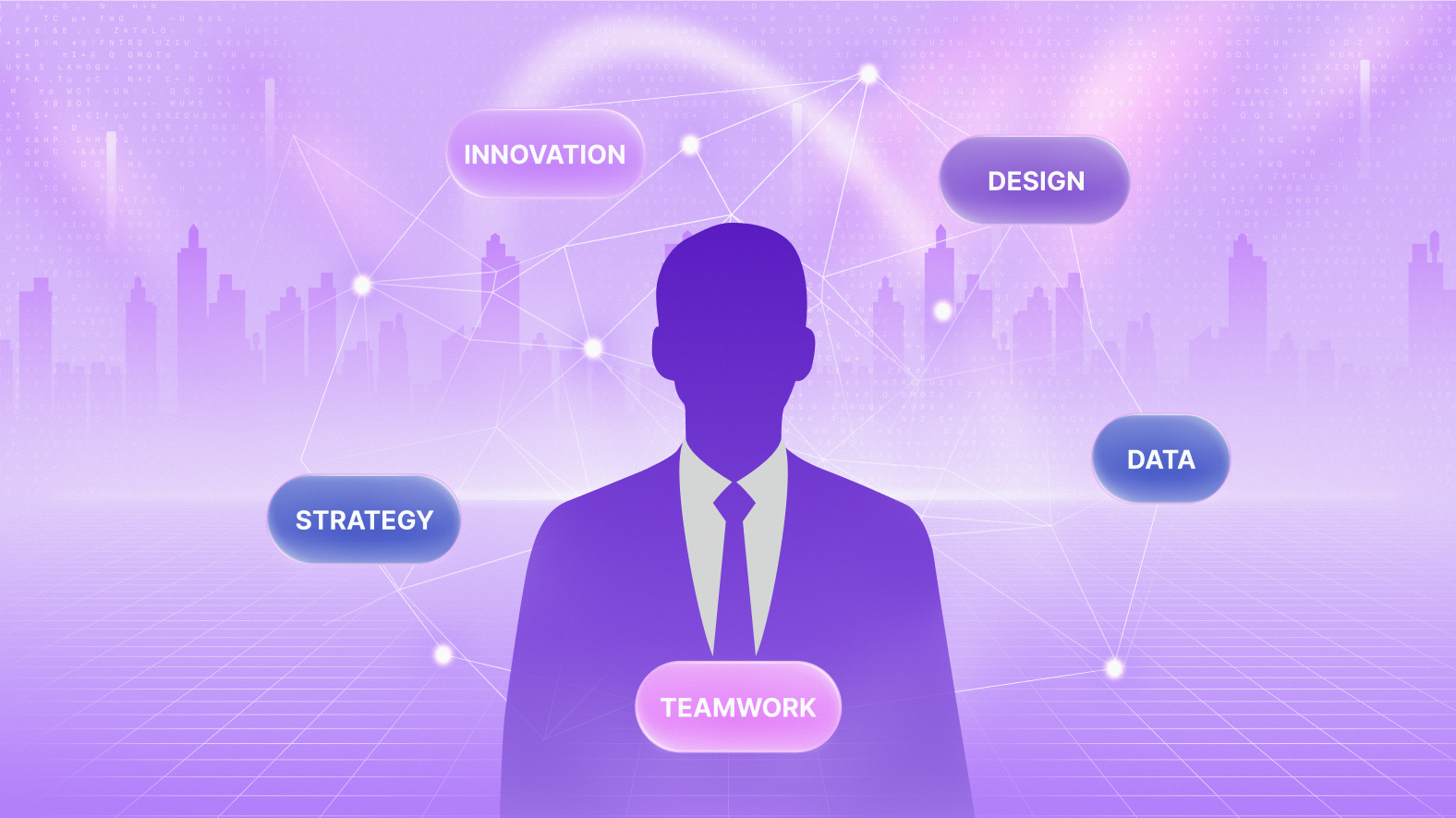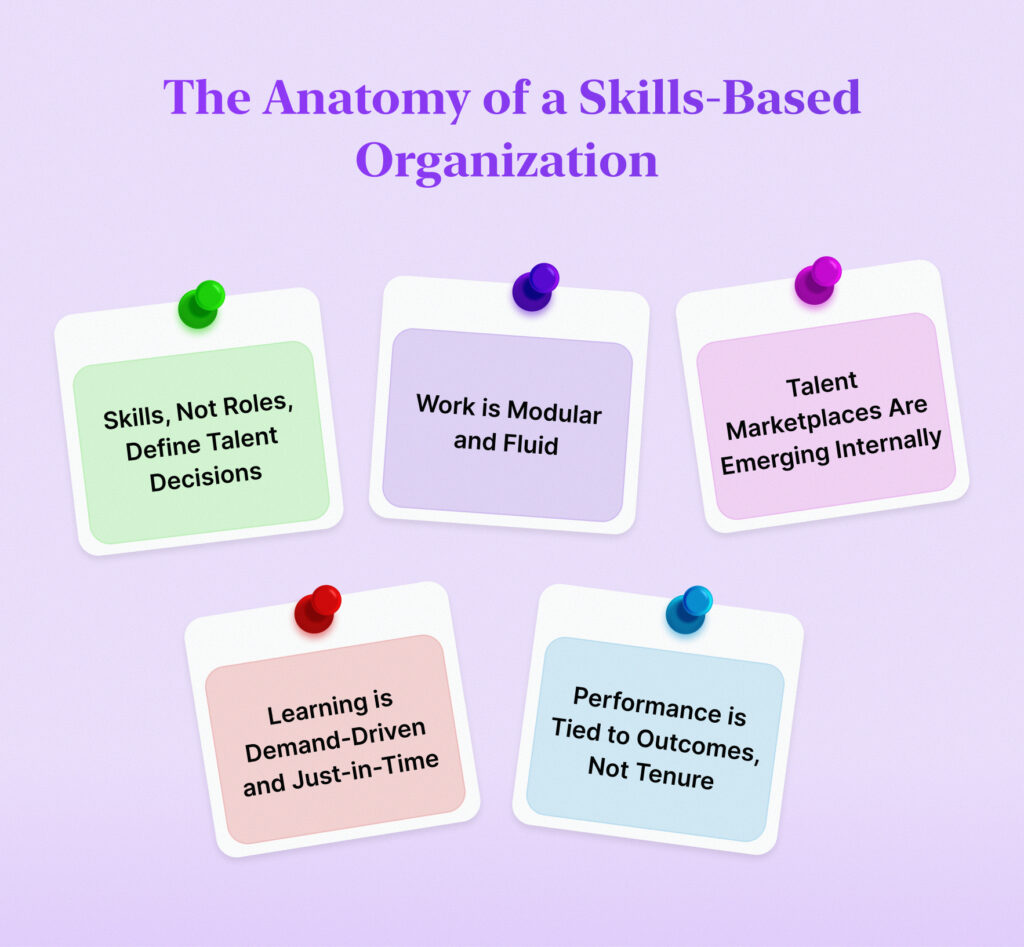Blog > Corporates, Everything Skills
Skills Are the New Org Chart: Why Capabilities, Not Titles, Should Drive Your Business

Over coffee last week, Papiya Banerjee, Ninzarin’s founder, shared a conversation between herself and the founder of a rapidly scaling tech company.
She recalled, “He said something that has stayed with me.” “He said, ‘I’m no longer looking for a Senior Manager of X or for a VP of Y.’ I’m looking for someone who has the capacity to solve this specific problem by tomorrow, and for someone who can lead a completely different challenge by next quarter.’”
That one sentence captures the essence of how organizations quietly transform and also reshape their thinking about talent, work, and growth.
Jobs have been considered as the fundamental unit for work for more than a century, not just skills. People at that time were defined by the titles that they had. We created rigid hierarchies. Regarding formal roles, we mapped career progression, compensation, and leadership development. A static pyramid was in fact the org chart. You vacated, or you progressed.
Today’s world is one that demands something of a radically different nature.

From Jobs to Capabilities: What’s Changing?
Papiya says founders plus CHROs should now move from “Who do we need to hire?” to “What capabilities do we need to unlock?”
This shift does not reflect semantics alone, it is structural. A skills-based model views people as no longer holding jobs. Dynamic portfolios with capabilities are seen, many adjacent, some emerging, and some mastered. Also, work is no longer confined within a static job description.
It’s defined increasingly as outcomes to deliver, problems to solve, also value to create.
As companies navigate complexity and innovate more aggressively, then move even faster, the customary job-based model is proving much too rigid. Internal mobility slows down. It limits access. Untapped potential is not being reached yet. It makes the progress and expansion of people more separate.
Leading organizations are redesigning work in alignment with skills instead.
The Anatomy of a Skills-Based Organization
So, what does this shift actually look like? Here’s how Papiya describes it:
- Skills, Not Roles, Define Talent Decisions
Hiring managers should now start by identifying the capabilities required to solve a business challenge not by opening a req for an existing job title. Similarly, internal mobility is guided by skill adjacency and learning potential, rather than years-in-role or departmental history.
- Work is Modular and Fluid
Instead of assigning entire jobs to individuals, work is broken down into projects, deliverables, or even tasks, matched to the most relevant skillsets across the organization, regardless of team or title.
- Talent Marketplaces Are Emerging Internally
Companies are now launching internal gig platforms, where employees can discover short-term projects across departments, apply their skills in new ways, and build new ones on the go.
- Learning is Demand-Driven and Just-in-Time Instead of static training calendars, learning paths are now personalized and tied to the business needs. If a new skill is required for a critical initiative, employees are upskilled rapidly and often apply that knowledge immediately.
Performance is Tied to Outcomes, Not Tenure Contribution is evaluated based on impact, the ability to lead, execute, innovate, or collaborate effectively, regardless of one’s seat in the hierarchy.
Real Business Value: Why This Works
Papiya recalls a particularly telling conversation with a business leader who recently dismantled the traditional functional silos within his org. “He said, ‘I had brilliant product minds sitting in engineering, ops thinkers in sales, and natural mentors in marketing, all underutilized because of their job descriptions.’”
This is precisely the opportunity that a skills-based approach unlocks:
- Agility: Teams are able to form then reform more fast when people are able to be deployed based upon capabilities rather than just titles, and this drives innovation at a pace that the market demands
- Equity: Decision-makers include more talent without pedigree bias or customary promotion paths. Hidden skills surface. Nonlinear careers are embraced.
- Retention: Employees feel seen as whole individuals for retention not boxes on an org chart. As they grow with more diverse opportunities, engagement deepens and they apply themselves.
- Efficiency: For static roles, companies can mobilize internal capacity instead of overhiring since efficiency comes from filling skill gaps flexibly through internal marketplaces or project-based teams.
The Challenges of Letting Go
Of course, making this shift is not easy.
Papiya points out, “There’s an emotional and operational inertia to overcome. Leaders have built entire management systems on the job-based model. Compensation bands, reporting structures, career ladders, they’re all deeply tied to roles.”
To move toward a skills-first approach, organizations need to rebuild foundational systems:
- Talent architecture must be rebuilt to map skills across roles, projects, and teams.
- Performance reviews need to shift from ‘Did you do your job?’ to ‘Did you drive the desired outcome?’
- Leadership development must focus on enabling people to lead across contexts, not just up the chain.
But the payoff, she argues, is more than worth it.
“The founder I spoke to said something powerful, ‘The more I focus on people’s skills, the more blind spots I uncover in my org. And that’s a good thing. Because it means we’re finally looking beneath the surface.”
What This Means for the Future
The flip side of reskilling is not stasis, it is decline. Organizations that fail to act will face cascading risks:
- Widening skill gaps: Critical roles remain unfilled or underperforming.
- Talent flight: High performers migrate to companies offering better growth opportunities.
- Reduced competitiveness: Inability to pivot toward new markets, technologies, or business models.
- Cultural stagnation: A workforce resistant to change becomes a barrier rather than an enabler.
The cost of inaction is already visible in sectors like manufacturing and retail, where automation has outpaced workforce evolution. Companies that did not anticipate reskilling needs now struggle with both operational inefficiencies and reputational damage.
From Rhetoric to Reality: Steps to Begin
The rise of generative AI, project-based work, and borderless teams only accelerates the relevance of this model. Skills not degrees, titles, or years-in-role, are becoming the universal currency of work.
Papiya believes this is not just a transformation of HR systems. It’s a re-imagining of how we define value and potential.
In her words, “The organizations that thrive next won’t be the ones with the most polished org charts. They’ll be the ones that know deeply, what their people are capable of, and how to match them with what the business needs today and tomorrow.”
A Final Reflection
When asked what excites her most about this shift, Papiya paused.
“It’s the possibility of promise, I think.” A sustainability project could be led on the morrow by someone within finance today. People themselves rewrite those paths. That orgs can work to try and stop fitting people into boxes. People may instead start creating work around their identity.
That, perhaps, is the greatest change of all by then.
